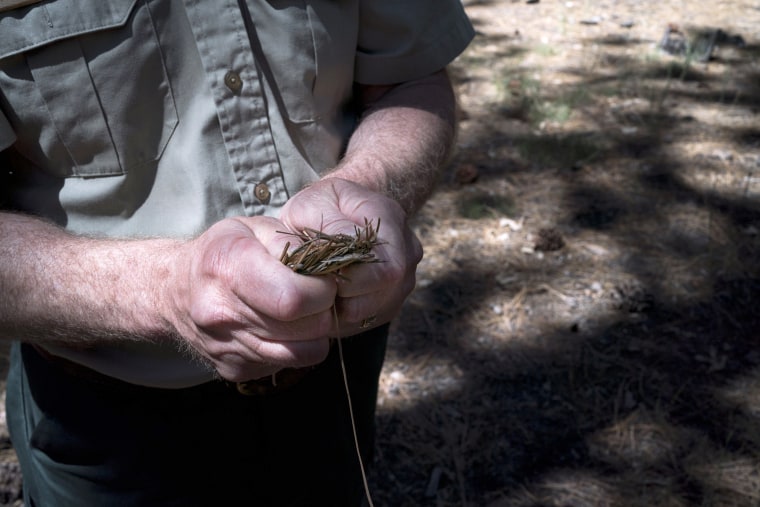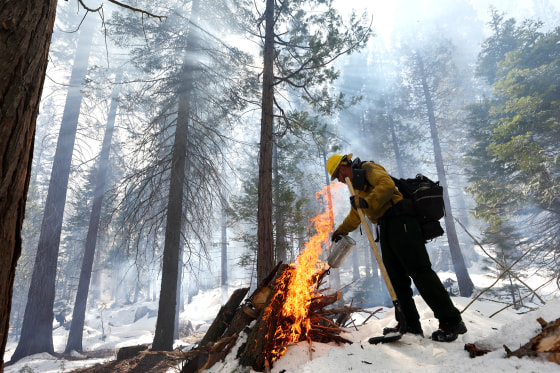A bill to improve how the federal government tracks wildfire prevention work passed the House in a near-unanimous 406-4 vote Wednesday, a month after the nation’s deadliest wildfire in over 100 years killed at least 115 people in Hawaii.
The bill, the Accurately Counting Risk Elimination Solutions (ACRES) Act, was proposed this year after an NBC News report revealed that the government has long overstated how much of the country’s federal forests it has protected from catastrophic fires.
A 2022 NBC News investigation found that the U.S. Forest Service had overstated how much land it treats to reduce wildfire risk by an estimated 21% over a 15-year period. The overstatement was largely a result of the agency repeatedly counting an area of land if multiple kinds of work were done on the same spot — a practice oversight agencies had warned against for two decades.
The bill’s author, Rep. Tom Tiffany, R-Wis., said, "The ACRES Act is a bipartisan step in the right direction to combat the wildfire crisis, and I’m thrilled the House passed this commonsense legislation to ensure federal land management agencies are accurately reporting their work in hazardous fuel reduction."
Tiffany, chairman of the House Natural Resources Committee’s federal lands subcommittee, cited NBC News’ reporting when he introduced the bill.
The act would require the Forest Service and the Interior Department, the other major federal land management agency, to produce detailed yearly reports about work to reduce hazardous fuels — the trees and brush that can turn low-level flames into deadly blazes — and mandate that the agencies count acres only once.
It would also require both agencies to standardize their tracking procedures to ensure accuracy and require a Government Accountability Office study on the agencies’ progress within two years of its enactment.

The bill is expected to next move to the Senate Energy and Natural Resources Committee, where last year chairman Joe Manchin, D-W.Va., and ranking member John Barrasso, R-Wyo., co-sponsored a forest management bill that included a similar provision about accurately counting the number of acres annually treated for wildfire risk. The bill applies to hazardous fuel reduction done by federal land management agencies, which mostly work on federally owned land.
The Aug. 8 Lahaina Fire on Maui killed at least 115 people, burned 2,170 acres, much of it privately owned, and damaged or destroyed more than 2,000 structures. It was America’s deadliest wildfire in over 100 years. The 2018 Camp Fire in California, which was started by a faulty electric transmission line and destroyed the towns of Paradise and Concow, previously held that title.

